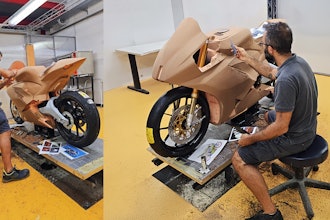In the newest models of cell phones, it’s not unusual to use a thumb print to gain access to your device — or even a facial recognition scan.
But let’s face it. Every form of security tech comes with its own flaws, and once these types of security tools are being utilized en masse, it’s no surprise that people look for ways to break them.
Forbes recently reported on an exercise designed to test the ability to penetrate facial recognition, and the outcome wasn’t very good for Android.
Thomas Brewster, a cybersecurity writer, joined 3D design company Backface in the stunt, where they took 50 images of Brewster’s head and then combined them before 3D printing a version from gypsum powder — before adding finishing touches, like color.
Brewster called his 3D-printed head “uncanny” in its comparison to real life, and apparently the facial recognition tech on four Android phones tested thought so too: all of them unlocked when the fake head was placed in front of the device.
The problem is, just because the technology is newer doesn’t mean it’s necessarily better. Several of the Android-based devices came equipped with warnings that facial recognition could be duped by a face that looks like yours and that it shouldn’t be used as your only form of security — though many of the phones offer you that option.
Forbes asked Matt Lewis, research director at cybersecurity contractor NCC Group, to weigh in, and he stressed that the most secure phone is going to be one that relies on information that’s secret: passwords and passcodes. So maybe going old school is better policy than not.
Brewster said that the Apple iPhone X was also tested, but the 3D printed head was unable to break in — nor was it able to gain access via Microsoft’s technology.
But if you’re using an Android device, beware: your doppelganger should be viewed as a threat.
And if it’s not them, there’s someone else out there just waiting for the chance to steal it and then utilize the very simple process of scanning and photographing your head from every angle and then 3D printing it. It’s just that easy.
— by Anna Wells




















